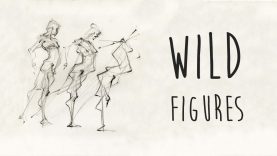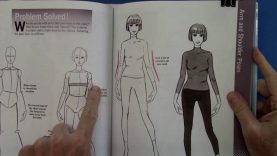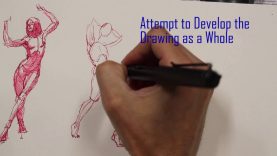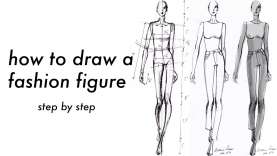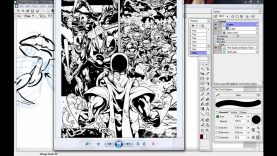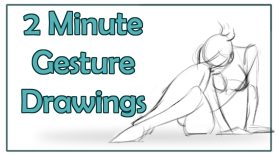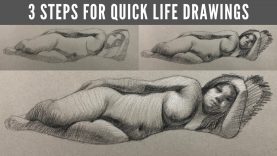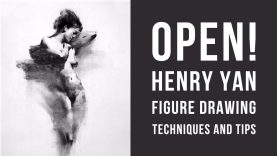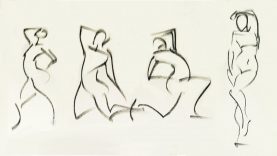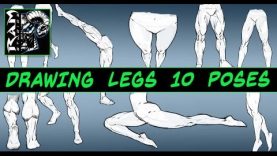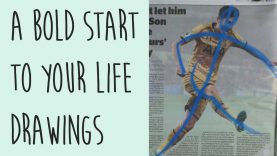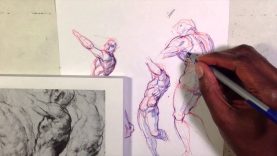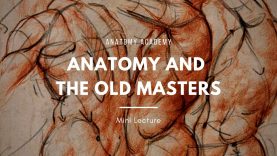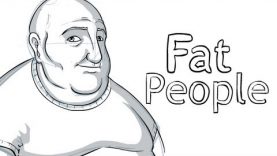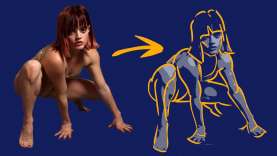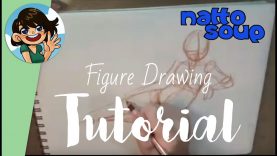Anatomy drawing with figurosity | The male mannequin
In this tutorial we’ll be doing an anatomy drawing of the male figure using Figurosity.
Click here to visit Figurosity: https://figurosity.com/
Drawing the human figure accurately can be incredibly challenging. In fact, oftentimes it can seem like such an overwhelming task that we completely avoid it or give up on it entirely.
Luckily we don’t have to tackle it all at once. The good news is the human figure can be backward engineered, broken down to its basic foundations and rebuilt from the ground up.
Funnily enough it’s the foundations of the human figure that allow us to draw it convincingly. It’s not the design of our characters or intricate details and decorative trinkets we draw in on top that counts. It’s their underlying skeleton, cloaked in the surrounding muscle structure which holds all of that other stuff up.
That’s what we’ll be studying in today’s figure drawing tutorial, starting with the basic mannequin model which we’ll use to establish the placement, proportions and pose of the male figure.
The mannequin model is built using a series of simplistic, primitive forms that represent the key parts of the human body – the head, torso and the limbs.
Because these building blocks are so basic, we’re able to easily think about and construct our figures from any angle, in any pose, from observation or imagination. The mannequin model is essentially a prototype dummy model used to compose our characters and give them the best chance of success right from the get go.
Since the mannequin model is so basic, we have a greater flexibility to explore and experiment with a variety of poses and views that our characters could be potentially presented in. Very rapidly we’re able to scribble down a rough and rudimentary figure that can be adjusted or revised in seconds. This speeds up our process, and allows us to reach the most optimal outcome for our characters in a minimal amount of time.
Once we’ve established the foundations of our figure drawing with the mannequin model, we’re then ready to begin drawing the anatomy in on top. The human body consists of a complex system of muscles that’s near impossible to remember all at once. The best approach we can take here is to focus on each key area of the body and take note of the main muscle groups found within it.
By learning the muscle groups that reside in each part of the human body separately, we’re able to keep things manageable and thoroughly address the topic with a deeper attention to detail than we’d otherwise be able to achieve tackling the muscle structure of the entire figure all at once. We want to go less broad with our learning at first, and focus on the depth of knowledge we’d like to attain instead.
We do that through anatomy drawings like the one you’re about to see demonstrated in this tutorial.
As you watch, notice how I attend to each part of the figure individually, placing in the main muscle groups one section at a time until I’ve covered it in its entirety. As I draw each muscle in, I’m only focused on the muscle groups within that specific area. I forget about the rest of the figure, pin pointing my attention on the portion I’m working on instead of stretching it out across the entire character.
This reinforces my learning experience and allows me to take in more information due the heightened level of focus I’m exercising from one point to the next. As a result, I’m more easily able to remember the muscle groups I’m learning about throughout the study. I’m able to execute the anatomy drawing with a greater amount of accuracy, as well as catch mistakes quicker when they happen.
Throughout this tutorial one of the key themes we’ll be concentrating on for both the mannequin model and muscle structure of the male human figure is ‘form’. We want to think of both of these components as having depth to them so that we can in turn give our character’s more dimension.
To help you out with this, I’ll show you how I use cross contours to overlay a wireframe that runs along the surface form of the mannequin model and muscles throughout the figure. This allows us to click our thinking over into a three dimensional mindset so that we can construct our characters with that additional level of depth and dimension by default.
I hope that you get loads of value out of watching this tutorial, and that you put the insights you’re about to learn to good use.
Thanks for watching, and until next time – keep on practicing, and keep on creating!
-Clayton
Software Used: Manga Studio
If you like the video, show your support by commenting, sharing or subscribing.
Comic Art Community – https://www.howtodrawcomics.net/comic-art-community/
How to Draw Comics .NET – http://www.howtodrawcomics.net/
Instagram – https://www.instagram.com/howtodrawcomics/
Facebook – https://www.facebook.com/howtodrawcomics
Pinterest – http://www.pinterest.com/howtodrawcomics/



